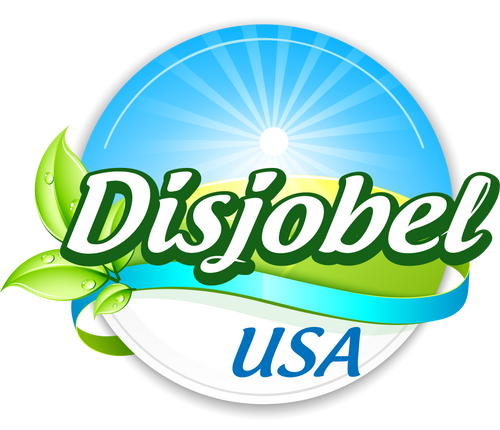Do you make the most of the versatility offered by margarine ingredients in your bakery recipes? This vegetable fat has become an essential ally in the preparation of a wide variety of baked goods. But do you really know how they influence your preparations? Read on to find out.
Applications and Advantages of Margarine in the Food Industry
Margarine stands out as one of the most important butter substitutes, especially in the bakery industry. It is used in the preparation of various products, such as breads, cakes, cookies, and doughs. But the question is: what makes it stand out? These are its main advantages (Vidae, 2021):
- It provides greater durability and stability at high temperatures.
- Its texture is smooth and creamy.
- It is more economical in comparison to butter.
- It offers ease of handling and application.
Margarine and Its Impact on Bakery Products
Now, learn how margarine ingredients influence bakery products. But first, let us analyze each of its elements in detail:
- Vegetable fats, such as palm or soybean oil, are usually their main base. They provide structure, texture, and air-holding capacity during baking (ADN40, 2021).
- Water is essential in the manufacture of this vegetable spread and serves to emulsify the different components. In some conventional variants, powdered milk is added to provide greater creaminess and flavor. Water hydrates the doughs used in the bakery sector and improves their final structure (Bradley, 2024).
- Preservatives extend the shelf life of margarine and products made with it. This is important at the bakery level, since it requires longer shelf life (Salazar, 2020).
- Emulsifiers maintain a homogeneous mixture between the fatty and aqueous components of margarine. These stabilizers, commonly used in lard substitutes, help create more uniform and elastic doughs, which optimize baked textures (Eufic, 2022).
- Flavorings and colorings contribute to improve their organoleptic characteristics. In this way, it is possible to achieve a more attractive flavor and appearance in the preparations (Henochowicz, 2022).
Tips for Making the Most of Margarine Ingredients
To get the most out of this shortening in your bakery products, we recommend following these tips:
- Use margarine at room temperature to facilitate its incorporation into doughs and mixtures.
- Adjust the amount in your recipes according to the type of preparation and the desired characteristics.
- Mix it uniformly with the other ingredients in order to ensure the correct integration of all components (Montenegro, 2020).
- Consider the margarine's smoke point, especially in high-temperature cooking techniques. This will prevent it from burning and affecting the flavor of what you prepare.
Margarine Ingredients to Achieve the Best Quality
When purchasing margarine for your industrial products, remember to look for alternatives that comply with the certifications and regulations corresponding to the bakery sector. Also, verify that the composition of the margarine selected meets your specific needs (Krueger, 2024).
As a precaution, before committing to a large quantity, run tests. This is an excellent way to ensure that it meets your standards and performance. Similarly, consider value for money to get the best cost for your investment; that is, carefully evaluate the production costs, the materials you require and all the manufacturing processes (OCU, n.d.).
In short, margarine ingredients can have an important impact on your preparations. Are you ready to master the art of baking with an excellent quality food fat? We invite you to get to know all our products at Disjobel. From this moment on, you will be able to transform your creations into culinary masterpieces and raise the standard of your baked delights.
Bibliographic references
ADN40. (2021, October 26). Esta es la historia de la margarina: ¿de qué está hecha? https://www.adn40.mx/salud/margarina-de-que-esta-hecha-historia-mva-especial
Bradley, J. (2024, April 14). Mantequilla o Margarina: ¿cuál es más saludable? BBC News Mundo. https://www.bbc.com/mundo/articles/cg6947k0k4no
Eufic. (2022, October 01). ¿Qué son los emulsionantes y cuáles son algunos de los que se utilizan con mayor frecuencia en los alimentos? https://www.eufic.org/es/que-contienen-los-alimentos/articulo/que-son-los-emulsionantes-y-cuales-son-algunos-de-los-que-se-utilizan-con-mayor-frecuencia-en-los-alimentos/
Henochowicz, S. (2022, January 23). Aditivos alimentarios. MedlinePlus. https://medlineplus.gov/spanish/ency/article/002435.htm
Krueger, M. (2024, May 19). Mercado de margarina industrial untetable. Medium. https://medium.com/@wrwgzwbr35/mercado-de-margarina-industrial-untetable-participaci-oacute-n-tama-ntilde-o-tendencias-informe-065d8fe0d802
Montenegro, C. (2020, June 23). Brioche: grasas y aceites en panificación ¿cuál utilizar? LinkedIn. https://www.linkedin.com/pulse/grasas-y-aceites-cu%C3%A1l-utilizar-en-panificaci%C3%B3n-c%C3%A9sar-montenegro/
OCU. (n.d.). Cómo elegir la mejor margarina. https://www.ocu.org/alimentacion/alimentos/guia-de-compra/elegir-margarina
Salazar, E. (2020, January 29). ¿Sabes qué es la margarina y de qué está hecha? El Universal. https://www.eluniversal.com.mx/menu/que-es-la-margarina-y-cuales-son-sus-ingredientes/
Vidae. (2021, September 02). Diferencias entre mantequilla y margarina. Mundo Deportivo. https://www.mundodeportivo.com/vidae/nutricion/20210902/1001684001/diferencias-mantequilla-margarina-act-pau.html




















